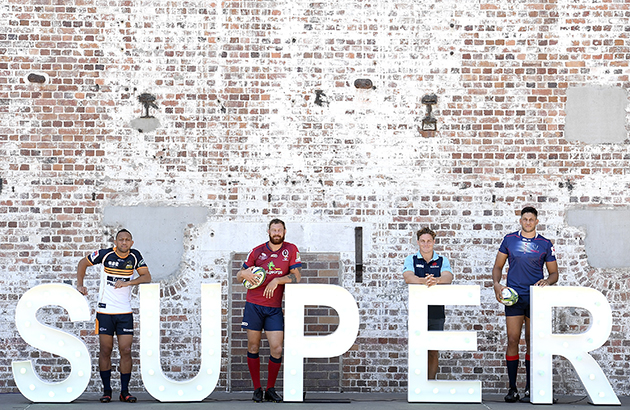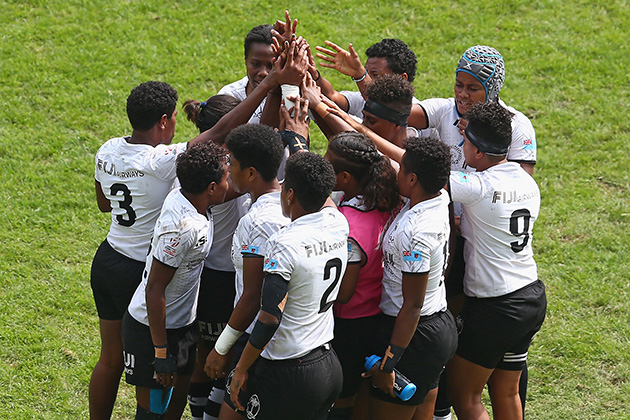Rugby World gets the lowdown on the Pacific Combine – how it works and which players have been identified
Pacific Combine creates new player pathway on islands
Players involved in this year’s World Rugby Pacific Challenge tournament in Suva, Fiji, weren’t just competing for the trophy but selection for the first Pacific Combine.
The goal of the Combine is to identify talent, improve it and then place players in a professional environment where they can continue to grow. It was a short programme but an effective one, and most importantly it is helping to develop players who will represent the Pacific Islands on the international stage rather than other countries.
PACIFIC ISLANDS SPECIAL – NEW RUGBY WORLD MAGAZINE OUT NOW
As all of the 30 players selected – 13 from Fiji Warriors, nine from Samoa A and eight from Tonga A – had been representing the allotted national second teams in the Pacific Challenge, they were already ‘captured’ for their country under World Rugby regulations. Plus, the tournament rules had been tweaked so squads contained predominantly U23 players to focus on the younger generation.
MORE FROM RUGBY WORLD ON THE PACIFIC ISLANDS
Why there needs to be a Pacific Islands Super Rugby team
Rugby World finds out what those in the…
Women’s rugby growing fast in Oceania
Rugby World finds out what the state of…
Fiji show progress with Pacific Nations Cup triumph
We reflect on the 2018 Pacific Nations Cup,…
World Rugby General Manager High Performance Peter Horne, who is the man behind the Combine idea, explains: “We’re trying to work on the athletic development of players earlier so then you get a better player at Test level.
“It was a partnership with the three unions, the players’ association and World Rugby to try to improve the development of locally-based players. Then we’re looking for a professional environment where they can grow and develop, with the ultimate goal of improving the quality of players available for the Test side.”

Lead role: Scott Wisemantel coached England in South Africa after working on the Pacific Combine (Getty Images)
In terms of the selection process, project lead Scott Wisemantel, England’s backs coach on their summer tour to South Africa, and his fellow coaches were looking to identify those with the best rugby ability, athleticism and effort, the last point taking in both what they did on the field and in their team environment off the field.
The 30 players picked came together for the week-long Combine in Fiji’s capital Suva where they took part in medical screenings, fitness tests and numerous rugby drills.
You can watch the film of what happened at the Combine here…
Their talent may have been somewhat raw but the potential was obvious and clubs in Australia and New Zealand then came in to offer contracts to several players.
It was important that players were placed with clubs that could offer the necessary support – leaving the islands to play professionally can be a culture shock for some – and Pacific Rugby Players were involved to ensure the players’ interests were looked after in negotiations as well as to educate players about contracts and agents generally.

Progress: Frank Lomani in action for Fijian Drua in Australia’s NRC (Getty Images)
At present the focus is on clubs in Australia and New Zealand as they are so much closer to the islands. As Horne says: “We want players who are identified to initially stay close to home so they can mature and grow and develop the skills to be a professional player before going elsewhere. There have been issues when players go to Europe too early.
“This way they can become better players while being close to home. It’s vitally important we try to develop the soft skills of a player as that makes them better rugby players. Things like managing money, understanding contracts and so on.”

New deal: Henry Stowers earned a contract with Western Force (Getty Images)
In all, six players from the Combine were offered contracts. Fiji scrum-half Frank Lomani is at Melbourne Rebels while Samoa No 9 Melani Matavao is with Mitre 10 Cup side Otago. Henry Stowers joined Western Force and John Ika is at Hawke’s Bay while Charlie Pahulu and Fetuli Paea should link up with North Harbour once their work permits are agreed.
The islands are already reaping the benefits given how well Lomani and Matavao played for their Test sides this summer and Combines are planned in both the Pacific and the Americas next year so more players will have a shot at professional contracts.
Don’t miss Rugby World’s Pacific Islands special – the September 2018 issue is on sale until the end of August.
Follow Rugby World on Facebook, Twitter and Instagram.









